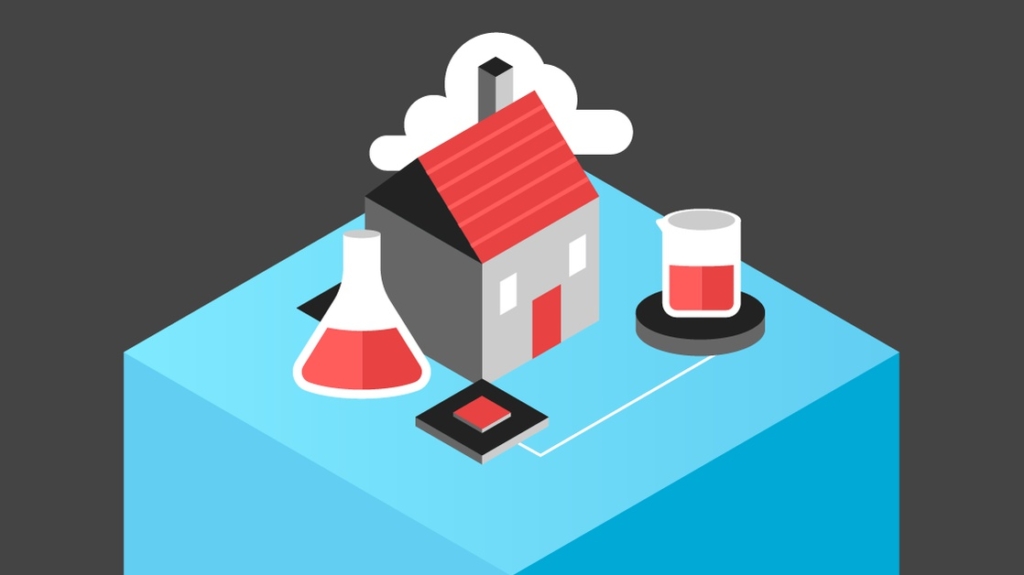What's Better: Home Labs or Virtual Labs?

Every IT pro eventually needs to learn a new technology on their own, isolated from their work systems and not on company time. Whether you want to train for a certification or need to come up to speed on a new system, you can accelerate your training and increase your depth of understanding by setting up your own lab.
In the past, this was accomplished by gathering your stash of outdated and retired equipment and installing a semi-functional operating environment that was painfully slow and highly unreliable. Not an ideal environment for education.
Today, you have many more options to experiment with and practice new technology. For instance, a home lab can now be assembled on your primary system using virtual machines. Or a virtual lab could be created in the cloud. Let's look at both scenarios to help you decide which is best for your particular needs.
Home Lab
To construct a home lab, the need for multiple test machines has been replaced with the ability to install servers and workstations on a single piece of hardware using virtual machines. You can do this on your primary system to keep costs down or procure a single mid-performance machine to act as your test lab.
In either case, your system should have a setting in the BIOS to enable the processor's virtualization extensions. After that, you will need to install a hypervisor, which acts as a central control center for the VMs. And lastly, you'll want to install and configure an operating system, server software, or virtual appliance for each instance you require.
Because the goal is to build a state-of-the-art environment without enterprise-level expenses, you should be cautious in your choice of software. To help you along, Both VMware and Microsoft offer free virtualization software to get your lab cruising along with great performance and minimal cost.
For instance, the VMware Workstation Player is available as a free hypervisor for 64-bit Windows and Linux PCs. The Microsoft Hyper-V Server 2016 is a complete operating system and hypervisor in one, also available as an unlimited free evaluation.
After deciding on and installing a hypervisor, you'll follow that particular hypervisor's process to install your software and configure it for your specific needs, usually from a CD/DVD or .iso image. You should be aware that if your training involves a specific hardware appliance, there are a number of virtual appliances available as downloadable images.
This can allow one of your VMs to act as an appliance, providing a unique opportunity for training on a system that would ordinarily be out of the home lab budget. You can browse some virtual appliances on the VMware site.
If you need to install server software that would ordinarily require a pricey license, you can look for free evaluation versions for your home lab. For instance, the TechNet Evaluation Center provides free evaluation downloads of Microsoft servers and platforms.
Virtual Lab
A virtual lab can also be established at a very low cost, or even for free in some circumstances. In many cases, the time to set up your environment can be reduced to minutes, compared to hours with a home lab. Both Amazon Web Services and Microsoft Azure offer a large number of prebuilt images that can get you up and running with just a few clicks.
If using Amazon Web Services, you can utilize the EC2 free tier for one year. The free tier allows enough computing power to test most scenarios, and 744 hours of operation per month divided among all of your EC2 instances. If you have already exhausted your free year-long AWS trial, you can also create EC2 Spot Instances for pennies.
If your needs are more Microsoft-centric, Azure also offers a free trial that includes a $200 credit for 30 days. The credit is large enough to allow you to configure as many virtual machines as you should need, although the 30-day time limit can be a hindrance.
After signing up for either service, you will be taken to a menu of images that you can quickly install and log into. After choosing an image, the installation usually only takes seconds, which you can spend configuring your local client's login process. After logging in, you can configure the new image with whatever specific server or software you require, and now you're ready to start your training.
Although setting up your own cloud account and virtual lab from scratch is easier than building a home lab in many ways, you wouldn't be the first IT pro to become overwhelmed or intimidated by the prospect of setting up your lab. After all, we're talking about a lot of work and a considerable learning curve just to get started with your training. Microsoft provides an alternative to all of this with their TechNet Virtual Labs.
With one click, a complete customized virtual environment is established for you and instruction is provided for your particular training needs. It's a lab environment with training materials all bundled into one.
Which to Choose?
If your training requires you to set up a server environment from scratch, it may be better to build a home lab rather than use the prebuilt images offered in the cloud. Likewise, if you are experimenting with a new appliance, the availability of virtual appliances for VMware may necessitate a home lab.
In most other scenarios, however, a virtual lab should prove to be the most cost effective and time efficient. By carefully considering which method will provide the best learning environment for the least amount of setup time, you can optimize your training experience and realize your goals with minimal hassle.
delivered to your inbox.
By submitting this form you agree to receive marketing emails from CBT Nuggets and that you have read, understood and are able to consent to our privacy policy.